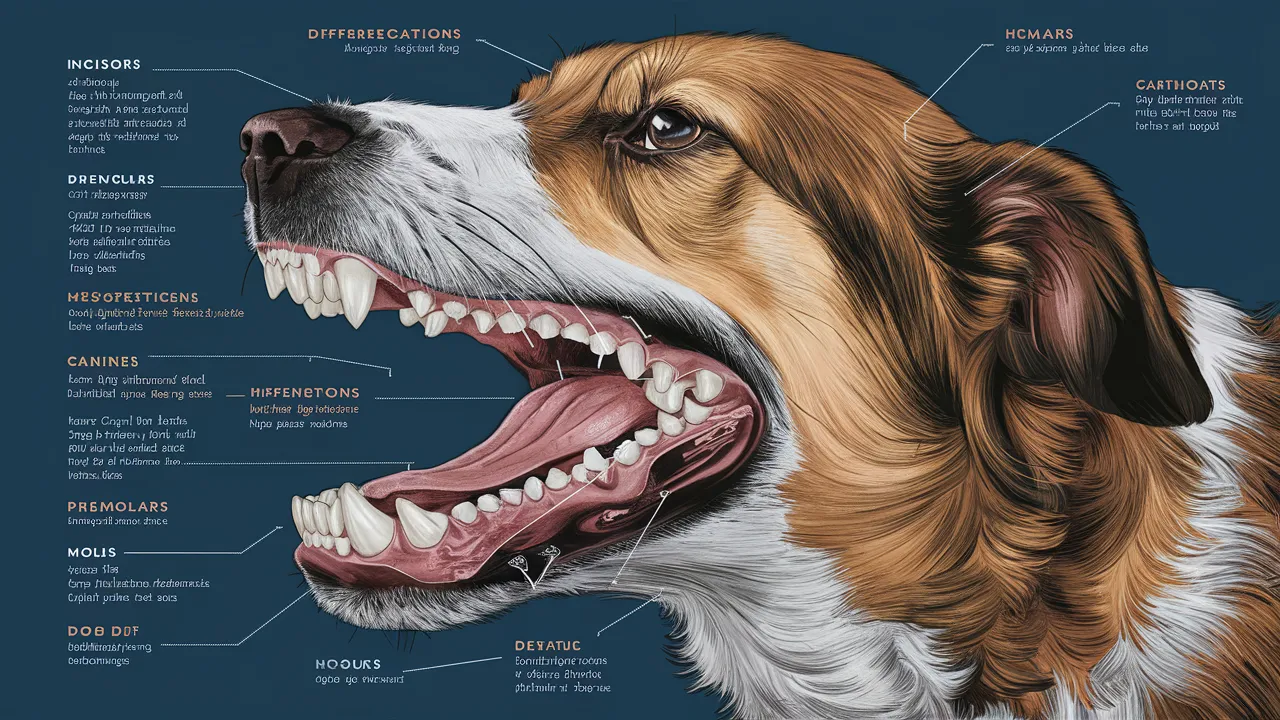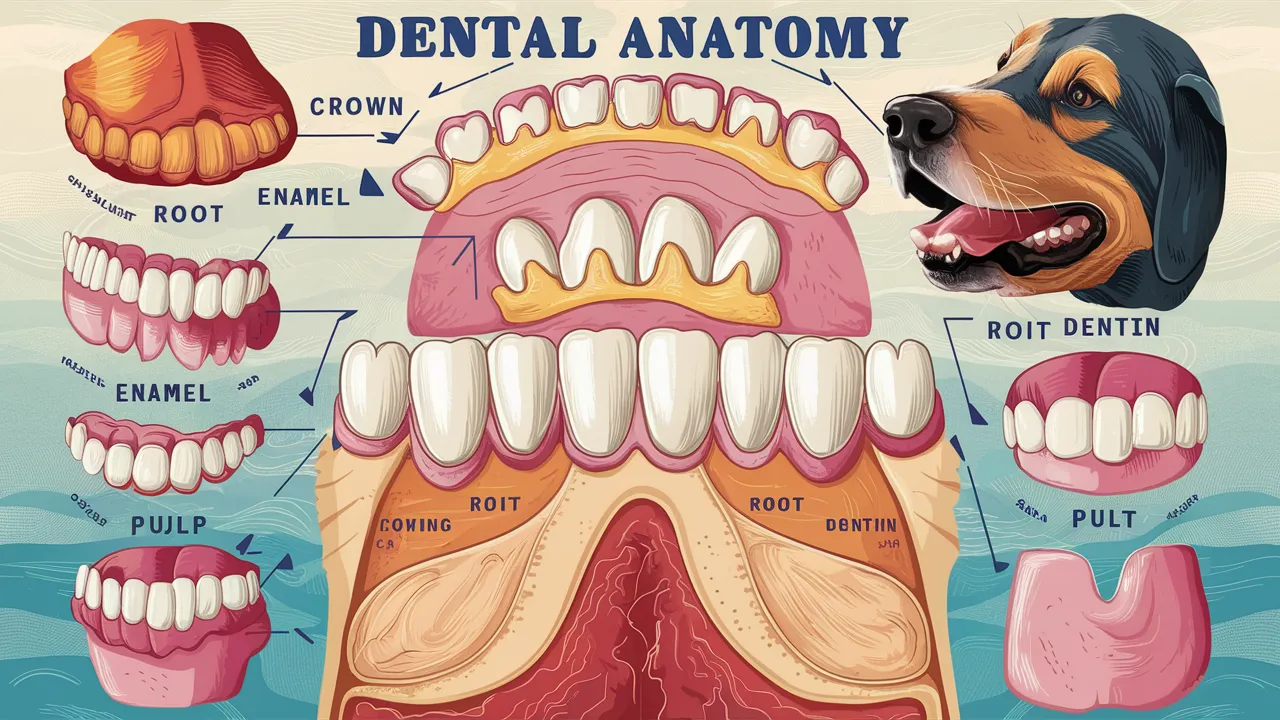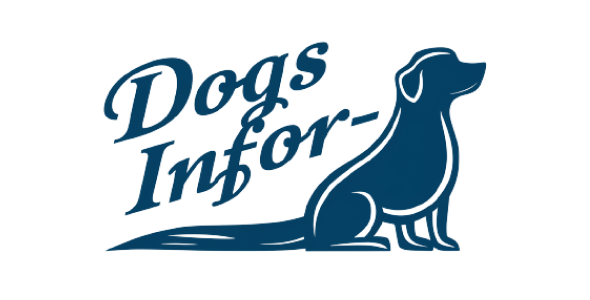The Dental Anatomy Of Dogs is as complex as it is fascinating. Just like humans, dogs have a unique dental structure that requires proper care to maintain their overall health.
In this article, Dogs Infor will dive deep into the dental anatomy of dogs, explore the different types of teeth they have, discuss common dental problems, and provide tips for maintaining your dog’s dental health.
The Importance of Canine Dental Health
Often overlooked, canine dental health is crucial for your dog’s overall well-being. Healthy teeth contribute to a happy and comfortable life, impacting everything from their diet to their lifespan.
Teeth and Overall Wellness
- Pain and Discomfort: Periodontal disease, a common consequence of poor dental hygiene, can cause pain and discomfort, making it difficult for your dog to eat, chew, and even play.
- Systemic Health: Bacteria from infected gums can enter the bloodstream and spread to other organs, potentially leading to heart disease, kidney disease, and liver disease.
- Quality of Life: Dental problems can significantly impact your dog’s quality of life, making them less playful, energetic, and happy.
The Role of Teeth in Eating and Digestion
- Chewing and Digestion: Teeth are essential for breaking down food, making it easier to digest. Proper chewing helps release enzymes and saliva, aiding in the digestion process.
- Nutrient Absorption: When teeth are healthy, dogs can properly chew and break down food, allowing for better absorption of nutrients.
- Weight Management: A healthy mouth allows dogs to enjoy a variety of foods, contributing to a balanced diet and healthy weight.

Types of Dog Teeth
Dogs have a variety of teeth, each designed for a specific function, making them efficient predators andscavengers.
Incisors: The Front Teeth
- Location: Located in the front of the mouth.
- Function: Used for biting, grooming, and picking up small objects.
- Appearance: Small, chisel-shaped teeth.
Canines: The Pointed Teeth
- Location: Located at the corners of the mouth, behind the incisors.
- Function: Used for tearing and holding prey.
- Appearance: Long, pointed teeth, often the longest teeth in the mouth.
Premolars: The Chewing Teeth
- Location: Located behind the canines.
- Function: Used for crushing and grinding food.
- Appearance: Larger than incisors, with a more rounded or pointed shape.
Molars: The Grinding Teeth
- Location: Located at the back of the mouth.
- Function: Used for grinding and crushing food.
- Appearance: Larger than premolars, with a flat or bumpy surface.
The Structure of a Dog Tooth
Just like human teeth, a dog’s tooth is composed of several distinct layers, each playing a vital role in its function and overall health.
Enamel: The Outer Layer
- Composition: Enamel is the hardest substance in the body, composed primarily of calcium phosphate.
- Function: It acts as a protective outer layer, shielding the tooth from wear and tear, acids, and bacteria.
- Appearance: Enamel gives the tooth its white, glossy appearance.
Dentin: The Inner Layer
- Composition: Dentin is a hard, yellowish tissue that lies beneath the enamel.
- Function: It provides support and structure to the tooth, and it also contains microscopic tubules that connect to the pulp.
- Appearance: Dentin is slightly less hard than enamel and has a yellowish hue.
Pulp: The Core of the Tooth
- Composition: The pulp is the soft, living tissue at the center of the tooth. It contains blood vessels, nerves, and connective tissue.
- Function: The pulp provides nourishment to the tooth and helps with sensation.
- Appearance: The pulp is a soft, pink tissue.
Root: The Anchor in the Jaw
- Composition: The root is the portion of the tooth that is embedded in the jawbone.
- Function: The root anchors the tooth in place and provides support.
- Appearance: The root is covered by cementum, a thin layer of tissue that helps it attach to the bone.
Crown: The Visible Part
- Composition: The crown is the portion of the tooth that is visible above the gum line. It is covered by enamel and dentin.
- Function: The crown is the part of the tooth that is used for chewing and biting.
- Appearance: The crown is the part of the tooth that we see.

The Development of Canine Teeth
Canine teeth go through a fascinating developmental process, starting with small puppy teeth and culminating in strong adult teeth.
Puppy Teeth
- Eruption: Puppy teeth, also known as deciduous teeth or milk teeth, begin to erupt around 3-4 weeks of age.
- Number: Puppies have a total of 28 deciduous teeth.
- Function: Puppy teeth are designed for chewing and tearing soft food, preparing them for the transition to adult teeth.
- Replacement: Permanent teeth start to erupt around 4-6 months of age, gradually pushing out the puppy teeth.
Adult Teeth
- Eruption: Adult teeth, also known as permanent teeth, begin to erupt around 4-6 months of age, replacing the deciduous teeth.
- Number: Adult dogs have a total of 42 permanent teeth.
- Function: Adult teeth are larger and stronger, designed for chewing and tearing a wider variety of food.
- Importance: Adult teeth are crucial for proper chewing and digestion, ensuring your dog can enjoy a balanced diet and maintain a healthy weight.
The Importance of Dental Health
Canine dental health is often overlooked, but it’s crucial for your dog’s overall well-being. A healthy mouth contributes to a happy and comfortable life, impacting everything from their diet to their lifespan.
The Connection Between Oral and Systemic Health
- Bacteria and the Bloodstream: Bacteria from infected gums can enter the bloodstream and spread to other organs, potentially leading to heart disease, kidney disease, and liver disease.
- Immune System: Poor oral health can weaken the immune system, making dogs more susceptible to infections.
- Chronic Inflammation: Periodontal disease is a chronic inflammatory condition that can affect other parts of the body.
The Risks of Untreated Dental Problems
- Pain and Discomfort: Periodontal disease can cause pain and discomfort, making it difficult for your dog to eat, chew, and even play.
- Tooth Loss: Untreated periodontal disease can lead to tooth loss, which can affect your dog’s ability to eat and digest food properly.
- Systemic Health Issues: As mentioned above, untreated dental problems can lead to serious health issues in other organs.
The Benefits of Regular Dental Care
- Prevention: Regular dental care, including brushing, dental chews, and professional cleanings, can help prevent periodontal disease and other dental problems.
- Early Detection: Regular dental exams can help detect problems early, when they are easier to treat.
- Improved Quality of Life: A healthy mouth allows dogs to enjoy a variety of foods, contributing to a balanced diet and healthy weight. This, in turn, leads to a happier and more active life.
Conclusion
A dog’s smile is a window to their overall health. By understanding the importance of canine dental care, you can help your furry friend live a longer, healthier, and happier life. Regular brushing, dental chews, and professional cleanings are all crucial for preventing tartar buildup and maintaining optimal oral health.

Related Post
Signs Your Dog Needs Probiotics: Digestive Problems
Green Stool In Dogs: Causes, Concerns And When To Worry
Dog Periodontal Disease Stages: Understanding Dog’s Health